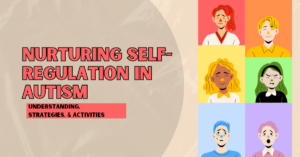What Is Self-Regulation?
Humans are a social species by nature, and self-regulation is the process by which people orient themselves to be good members of a social group. Without self-regulation, humans would succumb to base desires regardless of the consequences that might come from engaging in such acts. However, most people acknowledge that others will evaluate their actions — whether consciously or subconsciously — and this understanding is what prevents people from constant self-indulgence.
Awareness
The first step of self-regulation is self-awareness. To change behaviors to align with societal group norms, a person needs to have the ability to reflect on their actions and the outward appearance of their emotions in the eyes of others. As a part of this consideration, a person can compare their own behavior to societal standards and make decisions that lead to change based on their conclusions.
Understanding
To self-regulate, a person also needs to have awareness that others will form opinions about them based on their behavioral displays. With this realization, a person can make inferences about the opinions of others, which is a skill often referred to as “theory of mind” or “mentalizing.” When a person breaks a social norm and feels criticism based on that action, they gain understanding that their behavior may be problematic.
Detecting Social Threats
Mentalization helps people detect social threats, which are signals that indicate the possibility that they may be excluded from a group. This ability to realize the potential for exclusion reinforces the fact that humans have an inherent need to feel a sense of belonging. Once a person acknowledges a social threat because of their conduct, they can begin to reform their behavior.
Resolution
When a person becomes the subject of negative group perception, they may attempt to reclaim their good social standing. To do so, a person may need to inhibit their personal desires or participate in activities that they have no interest in. People may also need to curb their emotional displays that may otherwise continue to make others view them in a negative light. This resolution is the final step of the self-regulation process.
Why Self-Regulation Is Important
Adjusting behavior to become a better member of a group isn’t the only reason why self-regulation is important. People also self-regulate to achieve personal goals. It’s what allows people to stay consistent with diet and exercise or set aside money as savings for the future. Without self-regulation, behaviors like overindulgence in food and reckless spending may be much more prevalent, because eating good food and buying desired items provide more instant gratification than the alternative.
Self-regulation is also important because it helps children to process normal yet stressful events that occur throughout life, like the loss of a family member.
Lack of Self-Regulation May Hinder Other Areas
Children who have difficulty self-regulating may also struggle with:
-
Sensory hypersensitivity
-
Sensory hyposensitivity
-
Attention and focus
-
Lethargy
-
Communication delay
-
Sleeping
-
Self-care
-
Playing with others
Alexithymia and Self-Regulation in Autism
Alexithymia is a phenomenon described as difficulty expressing and recognizing emotions, and around 85% of individuals diagnosed with autism spectrum disorder also display alexithymic characteristics. A 2023 study by David Preece, et al. found that individuals with a high level of alexithymic qualities are less likely to engage in adaptive regulation strategies while simultaneously employing maladaptive strategies for regulation. Overall, self-regulation is an area of difficulty for people with alexithymia, and that difficulty can be compounded for alexithymics with autism.
Activities to Strengthen Self-Regulation
Educators and family members can participate in activities that can help children improve self-regulation. There are also many different activities for different focus areas of self-regulation.
Reading Cues
Charades: Engage with the child in a game of “feelings charades” and take turns acting out specific emotions while the other attempts to guess the feeling.
Mirroring: Face the child while producing slow movements, and have the child try to follow along to mirror those movements. After a while, allow the child to take the lead as they watch an adult mirror their movements.
Degrees of Feeling
Feelings Thermometer: Draw or print out images of thermometers and label them with the names of feelings. Allow the child to shade the thermometers according to their level of that feeling.
Number Scale: The number scale activity can work similarly to the Feelings Thermometer activity. Simply create a scale from 1-10 and attach images of what a feeling may look like at each interval.
Self-Expression
Music: Listen to classical pieces of music with the child and have them describe any feelings they may hear in the music. Alternatively, allow them to choose their own music to describe.
I Need: Collaborate with the child to create a list of things that help them express themselves. Have them practice statements such as, “I need a hug,” when they are feeling sad or lonesome.
From Co-Regulation to Self-Regulation
Many children with autism depend on co-regulation when dealing with stressful situations. Unlike self-guided emotional regulation, co-regulation is the process of regulating with the support of another individual. With co-regulatory coaching, children can begin to learn to process emotions healthily and may eventually be able to conduct self-directed emotional regulation in time.
Sources Cited:
Heatherton, Todd. F. Neuroscience of Self and Self-Regulation.
Nebraska Department of Education. Activities that Promote Self-Regulation and Resiliency.
Preece, David A. Alexithymia and emotional regulation.







